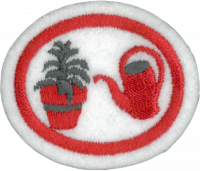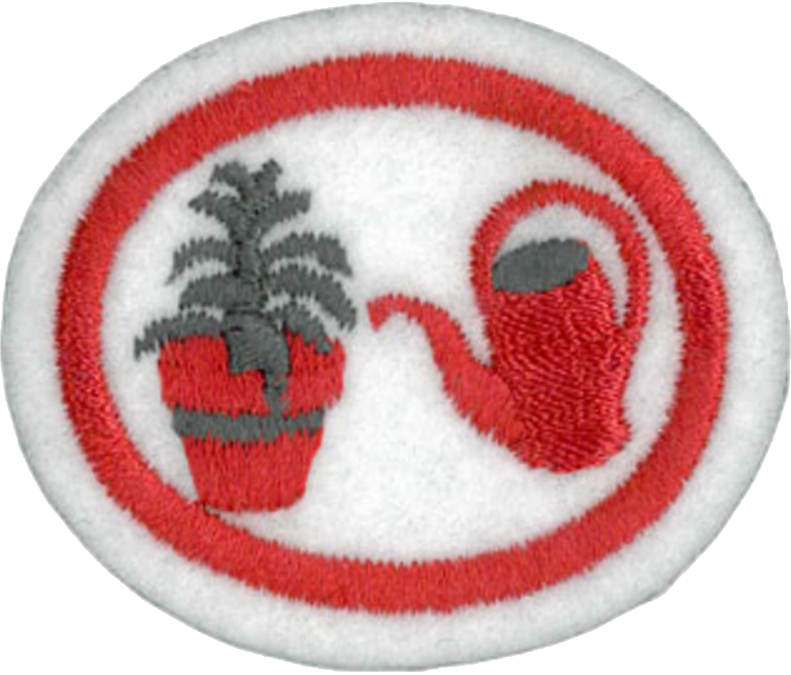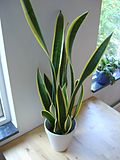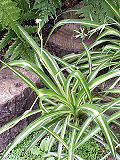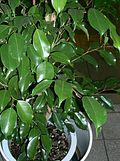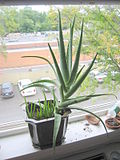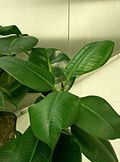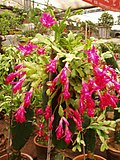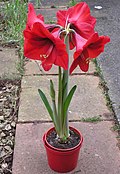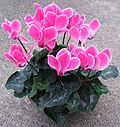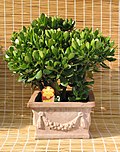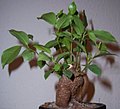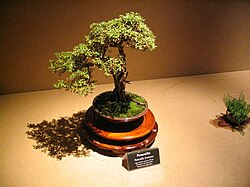Especialidades JA/Plantas de interior/Respuestas
Nivel de destreza
2
Año
1976
Version
19.12.2025
Autoridad de aprobación
Asociación General
1
2
3
3a
Plantas caseras adaptadas a la luz directa del sol
3b
3c
Plantas caseras adaptadas a suelos muy húmedos
4
El ciclamen (también conocido como artánita o pan de puerco) comúnmente vendido por los floristas es C. persicum, que se congela fácil. Los cultivares seleccionados del ciclamen pueden tener flores blancas, rosadas brillantes, rojas o púrpuras. Mientras que florecen, los ciclámenes de los floristas se deben mantener debajo de 20° C (68° F), con las temperaturas de la noche preferiblemente entre 6,67 °C a 15 °C (44 °F a 59 °F). Las temperaturas más de 20 °C (68 °F) pueden hacer que la planta permanezca inactiva.
5
6
7
La Saintpaulia, comúnmente conocida como la violeta africana, es un género de seis especies de plantas herbáceas perennes que florecen en la familia Gesneriaceae, oriunda de Tanzanía y al adyacente sureste de Kenia en África oriental tropical, con una concentración de especies en las montañas Nguru de Tanzanía.
Las violetas africanas prefieren una temperatura constante entre 20-25° C (68-77° F) con alta humedad y prosperan mejor sembradas en humus bien drenado o compost de ensalada. A veces pensamos en los trópicos como lugares muy CALIENTES y HUMEDOS, pero bajo los altos árboles de un verdadero ambiente tropical, la temperatura es bastante moderada y cómoda, aunque la cantidad de humedad en el aire es más alta que en muchos lugares en el oeste de los EE. UU.
En términos prácticos de planta casera, esto significa que las violetas africanas y otros gesnariados se sienten cómodos en las mismas temperaturas y niveles de humedad que los seres humanos, A MENOS que la violeta africana se coloque cerca de un aire acondicionado, donde el aire frío y seco hará que se pierda.
8
Cuttings
- Leaf cuttings
- Any plant with leaves such as African Violet, Geranium etc. can be propagated with leaf cuttings. Using a sharp knife, cut off a healthy leaf at the point where it joins the stem. Insert the cut part, called a petiole, into the rooting hormone. Place the end into a small container of light potting soil in which you make a small hole with a pencil. Making a hole prior to planting assures that the rooting hormone will not be brushed off the cutting when you plant it. Perlite, Vermiculite, and/or water-soaked Sphagnum moss can be added to potting soil to make the soil light. Make sure the leaf is leaning slightly so that the new plants will have plenty of light and not be shaded by the leaf.
- Stem cuttings
- These are treated just like leaf cuttings except you cut off a stem with several leaves instead of just one leaf. Remove the bottom leaves, leaving a few at the top. Proceed as with the leaf cutting.
In both instances, cover the pot with a plastic bag or inverted glass jar. This will keep moisture from evaporating and keep the cutting from wilting. Keep in a warm location with diffused light but out of direct sunlight. When there is indications of growth after about 3 to 6 weeks, transplant the new emerging plant into a new pot of potting soil. Continue to keep a humid environment for about 2 more weeks until active growth begins.
Layering
Layering is a means of plant propagation in which a portion of an aerial stem grow roots while still attached to the parent plant and then detaches as an independent plant.
Natural layering typically occurs when a branch touches the ground, whereupon it produces adventitious roots. At a later stage the connection with the parent plant is severed and a new plant is produced as a result.
The horticultural layering process typically involves wounding the target region to expose the inner stem and optionally applying rooting compounds. In ground layering, the stem is bent down and the target region buried in the soil. This is done in plant nurseries in imitation of natural layering by many plants such as brambles which bow over and touch the tip on the ground, at which point it grows roots and, when separated, can continue as a separate plant. In either case, the rooting process may take from several weeks to a year.
Layering is more complicated than taking cuttings, but has the advantage that the propagated portion can continue to receive water and nutrients from the parent plant while it is forming roots. This is important for plants that form roots slowly, or for propagating large pieces.
Offsets
Offsets are layers of plants in the plant nursery business. They are clones of the mother plants ("hens and chicks"), meaning that they have the same genetic code.
Offsets form when meristem regions of plants, such as axillary buds or homologous structures enlarge, and differentiate into a new plant with self-sustaining structures. Tulips and lilies are examples which display offset characteristics.
When propagating plants to increase a stock of a cultivar, thus seeking identical copies of parent plant, various cloning techniques (asexual reproduction) are used. Offsets is a natural means by which plants may be cloned.
In contrast, when propagating plants to create new cultivars, sexual reproduction through pollination is used to create seeds. The recombination of genes gives rise to offspring plant with similar but distinct offspring genome.
Division
Division is a method of asexual plant propagation, where the plant (usually an herbaceous perennial) is broken up into two or more parts. Both the root and crown of each part is kept intact. The technique is of ancient origin, and has long been used to propagate bulbs such as garlic and saffron.
To divide a plant, wait until late summer when the plant has quit producing flowers and has died back. Dig up the bulbs and break them apart as you would a clove of garlic (which is a bulb). Replant the bulbs wherever you want them (some perhaps in the very spot where you dug them up, others elsewhere).
The Plants
8a
8b
8c
8d
8e
8f
8g
8h
8i
8j
8k
8l
8m
8n
8o
8p
8q
8r
8s
8t
8u
9
Bonsai is the art of aesthetic miniaturization of trees by growing them in containers. Cultivation includes techniques for shaping, watering, and repotting in various styles of containers. The word bonsai has been used in the West as an umbrella term for all miniature trees.
10
Humidity is the amount of water vapor in the air. The term "humidity" is usually taken in daily language to refer to relative humidity. Relative humidity is defined as the amount of water vapor in a sample of air compared to the maximum amount of water vapor the air can hold at any specific temperature in a form of 0 to 100%.
Humidity, along with temperature, moisture, light, soil mixture, fertilizers, potting, and pest control, is one of the critical factors that should be considered when caring for a houseplant.
Humidity is slightly more difficult to control than temperature. The more commonly used houseplants have established that they can survive in low humidity environments as long as their roots are kept properly irrigated. Most plants thrive in 80% relative humidity while most homes are usually kept around 20% to 60% relative humidity. Besides buying a humidifier, there are a few things that can be done to increase humidity around houseplants. The most popular methods used to raise the ambient humidity are misting and pebble trays, which are shallow trays covered with pebbles and filled with water that evaporates to increase humidity. Other methods of raising humidity include grouping plants closely together and not placing plants in drafty areas. Misting is somewhat controversial among gardeners, with some that swear by it and others that say it does little to increase humidity around plants.
11
a. Violeta africana
b. Aspidistra
c. Planta de aluminio
d. Narciso amarillo
e. Gloxinia
f. Culantrillo
g. Tolmiea
h. Tulipán
i. Helecho común
j. Begonia
k. Asplenio
l. Ficus
m. Jacinto
n. Narciso
o. Lazo de amor (cinta, malamadre, araña)
p. Cóleo
q. Crocus (azafrán)
r. Caladium (oreja de elefante)
s. Geranio
t. Iris
u. Filodendro
v. Sansevieria
